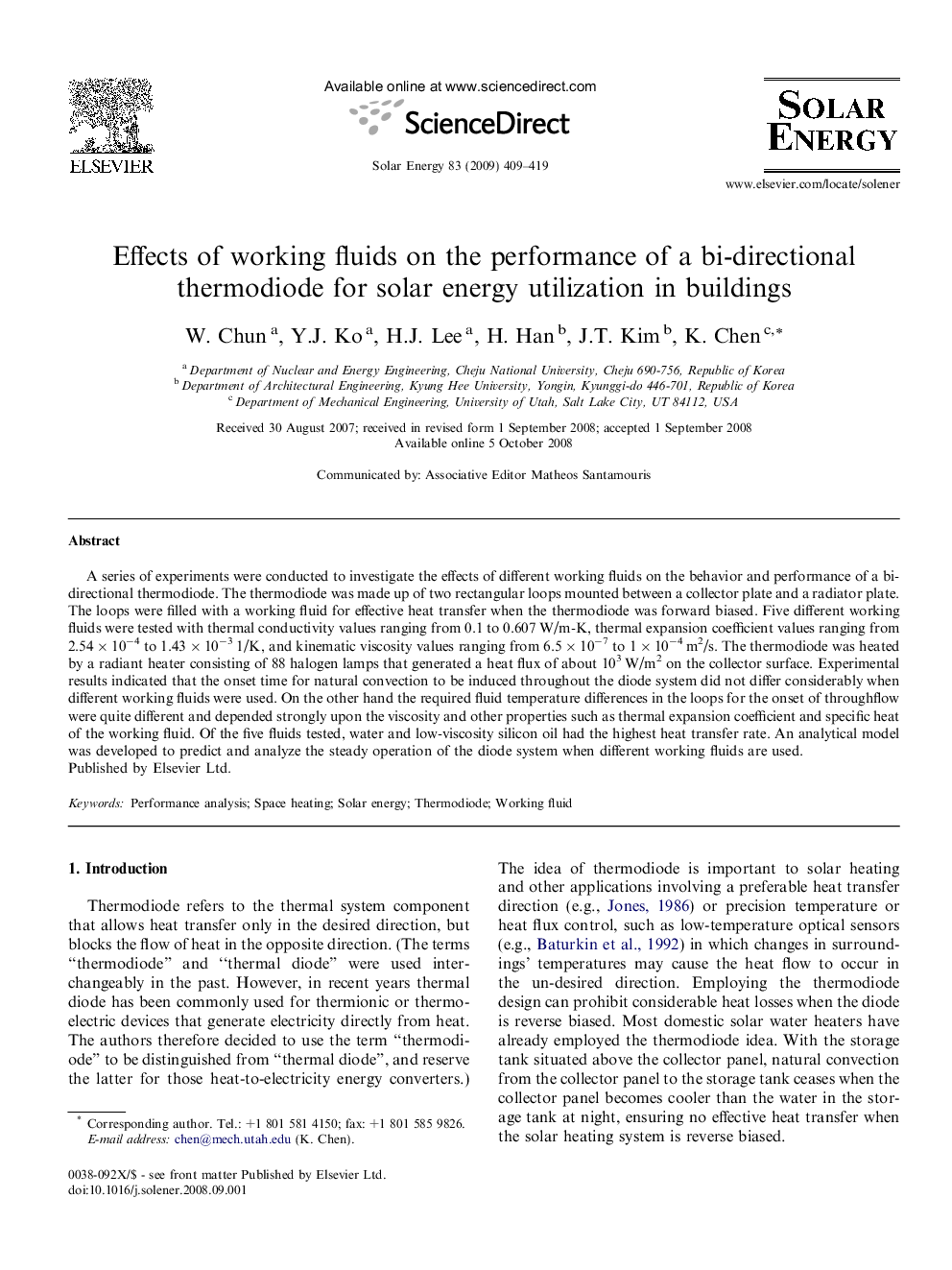| Article ID | Journal | Published Year | Pages | File Type |
|---|---|---|---|---|
| 1551959 | Solar Energy | 2009 | 11 Pages |
Abstract
A series of experiments were conducted to investigate the effects of different working fluids on the behavior and performance of a bi-directional thermodiode. The thermodiode was made up of two rectangular loops mounted between a collector plate and a radiator plate. The loops were filled with a working fluid for effective heat transfer when the thermodiode was forward biased. Five different working fluids were tested with thermal conductivity values ranging from 0.1 to 0.607Â W/m-K, thermal expansion coefficient values ranging from 2.54Â ÃÂ 10â4 to 1.43Â ÃÂ 10â3 1/K, and kinematic viscosity values ranging from 6.5Â ÃÂ 10â7 to 1Â ÃÂ 10â4Â m2/s. The thermodiode was heated by a radiant heater consisting of 88 halogen lamps that generated a heat flux of about 103Â W/m2 on the collector surface. Experimental results indicated that the onset time for natural convection to be induced throughout the diode system did not differ considerably when different working fluids were used. On the other hand the required fluid temperature differences in the loops for the onset of throughflow were quite different and depended strongly upon the viscosity and other properties such as thermal expansion coefficient and specific heat of the working fluid. Of the five fluids tested, water and low-viscosity silicon oil had the highest heat transfer rate. An analytical model was developed to predict and analyze the steady operation of the diode system when different working fluids are used.
Related Topics
Physical Sciences and Engineering
Energy
Renewable Energy, Sustainability and the Environment
Authors
W. Chun, Y.J. Ko, H.J. Lee, H. Han, J.T. Kim, K. Chen,
